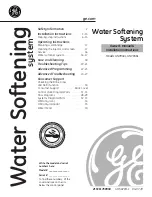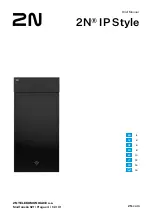&
Page 31
The counter divide ratio loaded into the counter determines the frequency of the conversion
command signals. A single counter provides time intervals (frequencies) programmable in the
range 4.0 μSecs (250 kHz) to over 65 seconds. Longer periods can be obtained by cascading
counters.
Alternatively the conversion clock source may be from an external trigger input.
At the start of the conversion, samples are transferred from the DAC FIFO (if the FIFO is enabled)
or from the driver’s buffer (if using timer interrupts) to each of the enabled DAC channels.
Dependent on how the system has been configured by the software and whether the FIFO is
enabled, an interrupt request, IRQ, is transmitted to the PC when the FIFO is;
x
Empty
x
Half Full
x
Full
The software may be configured to use timer interrupts instead of the DAC FIFO. In this case, the
driver will be programmed to write to the enabled DAC channels when there is a rising edge on the
output of counter channel 1. The counter channel is programmed to generate such interrupts at
the required rate.
If the DAC FIFO is not being used, the EXTCONVCLK / EXTTRIG input cannot be used to
generate an interrupt to trigger a conversion, but interrupts can be generated on a rising edge of
PPI port C0 or port C3 instead to achieve the same effect. Bits C0 to C3 of the PPI chip should be
programmed as inputs to do this.
If the DAC FIFO is not being used and individual timer or external interrupts are used instead, the
DAC update interval is subject to jitter caused by interrupt latency within the system.
4.6.3
Power Supplies
Power Supplies. Both positive and negative supply voltages to the DACs and associated analog
circuitry are derived from the PCI bus’s +12 and –12 volt power supplies. Inductor and capacitor
filters are employed to prevent noise from the PC appearing on the DAC outputs. Ground
connection between digital and analog systems is at a single star point.
4.7
PPI Digital Inputs and Outputs ( Only)
The has an 82C55 Programmable Peripheral Interface (PPI) chip with all functions of
ports A and B, and optionally port C, available to the user. All 24 I/O pins of the user PPI are
brought out to the 50 way D-type connector, and can be used to control other external devices, or
to accept control inputs from an external device. Some port C lines are shared with other functions.
Содержание PCI230+
Страница 2: ...PCI230 PCI260 ...


















